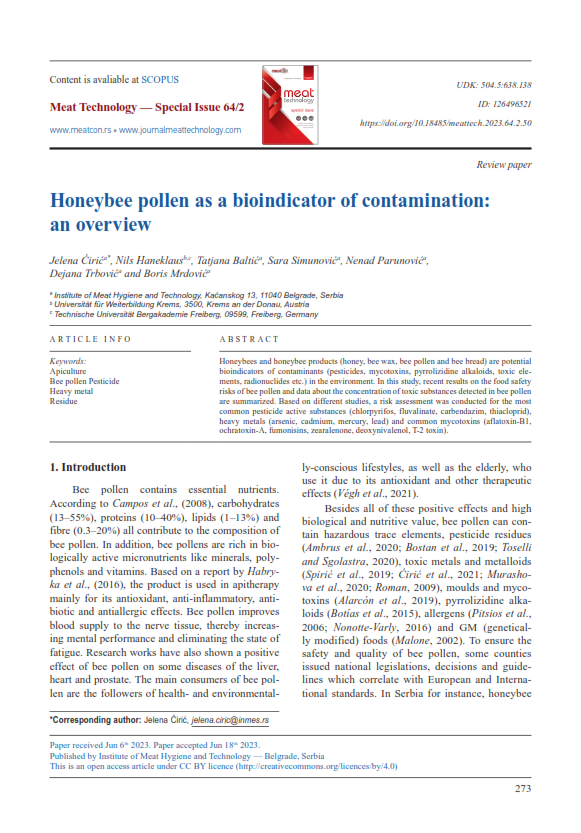Honeybee pollen as a bioindicator of contamination: An overview
Keywords:
Apiculture, Bee pollen Pesticide, Heavy metal, Residue
Abstract
Honeybees and honeybee products (honey, bee wax, bee pollen and bee bread) are potential bioindicators of contaminants (pesticides, mycotoxins, pyrrolizidine alkaloids, toxic elements, radionuclides etc.) in the environment. In this study, recent results on the food safety risks of bee pollen and data about the concentration of toxic substances detected in bee pollen are summarized. Based on different studies, a risk assessment was conducted for the most common pesticide active substances (chlorpyrifos, fluvalinate, carbendazim, thiacloprid), heavy metals (arsenic, cadmium, mercury, lead) and common mycotoxins (aflatoxin-B1, ochratoxin-A, fumonisins, zearalenone, deoxynivalenol, T-2 toxin).

Published
2023-11-01
How to Cite
Ćirić, J., Haneklaus, N., Baltić, T., Simunović, S., Parunović, N., Trbović, D., & Mrdović, B. (2023). Honeybee pollen as a bioindicator of contamination: An overview. Scientific Journal "Meat Technology", 64(2), 273-276. https://doi.org/10.18485/meattech.2023.64.2.50
Section
Review paper




